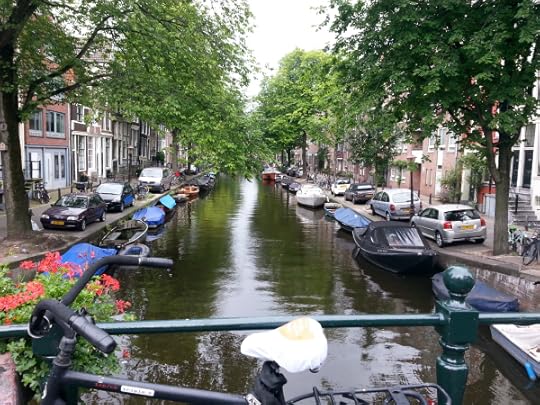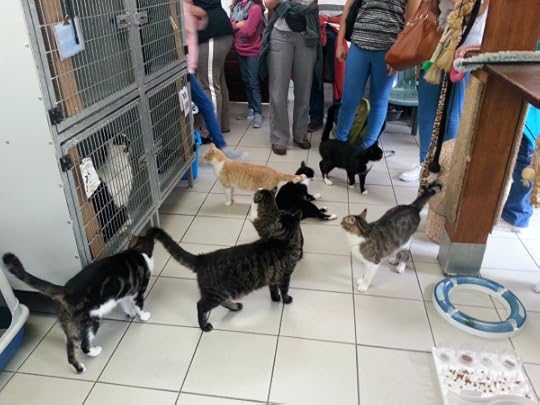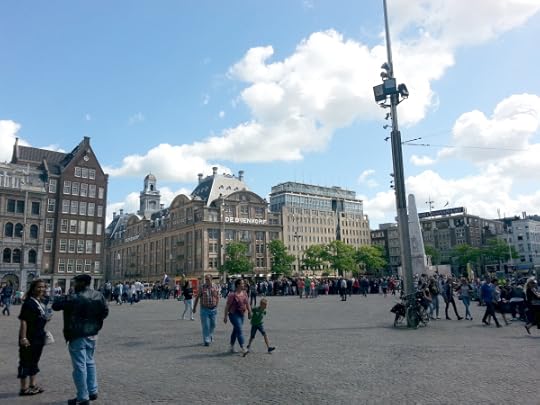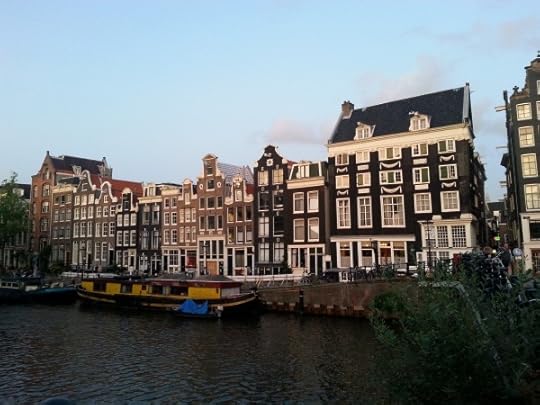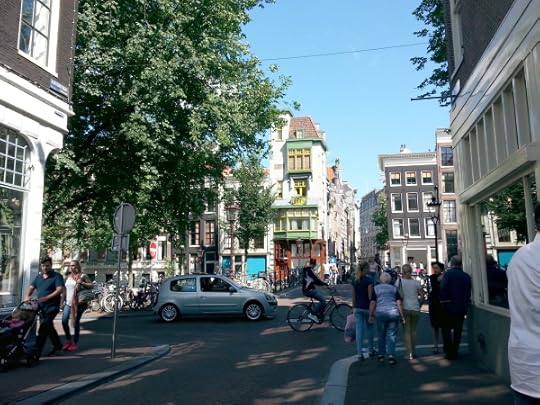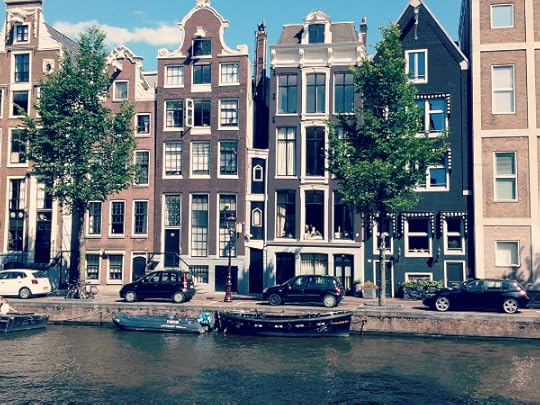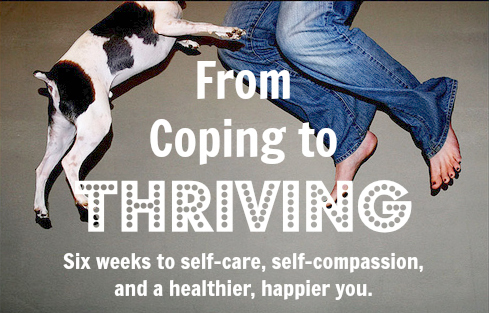Hannah Braime's Blog, page 30
August 24, 2014
A Brief Guide to Amsterdam
This is the first post in a new series that covers places I’ve visited, loved, and want to share with you, dear reader. Travel is something that has had a huge impact on my experience and perception of the world, and I hope to share some of my experiences and perhaps even inspire you to embark on your own travel-based adventures. I spent three days in Amsterdam at the beginning of August so this seemed like an excellent place to start.
Amsterdam is undeniably picturesque—so much so that it can almost feels like a parody of itself. Despite its tricky history, walking through the streets of the old town feels a little like walking through a Dutch-themed museum. So much about the city is totally endearing, from the amicable people (and their startlingly perfect English), to the city-wide love affair with bicycles, to the patchwork, slightly skewed buildings that line the canals in the old town.
Amsterdam manages to cultivate a bustling city vibe without feeling too crazy or overwhelming. Whether you’re a city person or not, it pretty much offers the best of both worlds. I totally fell in love with the place while we were there and can’t wait to go back again at some point in the future.
Sights
Neither I nor Mr Becoming Who You Are are big museum/gallery fans, so most of our time in Amsterdam was spent wandering around, getting a feel for the city, and observing Amsterdam life. We did, however, visit a few sights worth seeing:
The canals. The canals west of the city centre are stunningly beautiful, and we spent many hours wondering around, particularly along Prinsengracht, Herengracht, and Singel. Each canal is lined with higgeldy-piggeldy buildings, whose origins span four centuries, from the 1600s to today. As well as the beautiful architecture, the lovely cafés, and the people-watching opportunities, the surprising thing about the canals is how peaceful they are. It’s hard to believe you’re in the middle of a big city, just blocks from Dam Square.
The three crosses. This is Amsterdam’s city symbol and it’s everywhere. Once you start noticing it, you’ll see it on signs, flags, bins, buildings, placards—even the wallpaper and carpet in our hotel was themed after this emblem. There’s something almost Amsterdam-nationalistic about seeing this symbol crop up everywhere but after a while noticing all the different representations also becomes quite a fun Easter Egg hunt.
The Anne Frank House. We intended to visit the house each day we were in Amsterdam and didn’t, which is why I will be taking the following advice when we got back in the future: book online in advance. Queues were around the block and back morning, evening, weekend, and weekday. We even came prepared with reading/listening material to while away the time, but the size of the queue was so epic (and our time in the city so short) it just didn’t feel right to spend a couple of hours standing in a museum queue when there was so much else we wanted to see. Having said that, all the locals we spoke to said it was worth seeing and I intend to get more organised about a visit next time we go.
De Poetzenboot (the Cat Boat). The Cat Boat is a small canal boat on Singel that is the canal area’s only cat shelter. They house 20+ cats, most of which roam free on the barge, while some are kept separately to keep the kitty peace or because they’re being adopted out. For two hours a day, five days a week, the public can visit the boat, socialise the cats, and learn more about the enterprise. It’s free to get in (donations welcomed at the end) and the cats are super cute. What’s not to love?
Dam Square. This was probably my least part of the city (see below), but it gets a mention thanks to the spectacular buildings that surround the area. Think towering 19th century stone buildings converted into department stores and shopping centres, plus an enormous gothic church whose bells peal out complex pieces rather than the usual repetitive scales or monotonous chimes.
The Cheese Museum. We wandered into the Cheese Museum on Prinsengracht to kill some time (I think it was raining) and left 30 minutes later a lot fuller and with some top gifts ideas for friends back in the UK. The Museum isn’t so much a museum (there’s a small room with some exhibits downstairs but funnily enough not many people are super interested in that part) as a huge cheese-sampling shop. The staff know more about cheese than I had thought was humanly possible, and you can walk around the store with a toothpick trying everything from vintage gouda to wasabi cheese, pesto cheese, and lavender cheese. Like the Cat Boat, the Cheese Museum is free to enter and runs on donations (and cheese-related purchases). If you like cheese, you will be in seventh heaven.
Jordaan. Jordaan is the old Jewish quarter and one of the most (if not the most) picturesque areas of the city. There’s quite a lot to see and do here, but there’s also great pleasure to be found in getting lost in the back streets and having a wander through the residential areas.
The Tulip Museum. The Tulip Museum is down the road from the Cheese Museum. We stopped in here briefly but frankly didn’t feel enthusiastic enough about tulips to pay 5 Euros to enter the museum. The shop out front is a flower-lover’s paradise, however, and seems to have every kind of tulip bulb under the sun.
The Nine Little Streets. The Nine Little Streets (De Negen Straatjes) is a collection of shopping streets. Most of the stores here are independent and packed with artisan goods, vintage clothes, art, handmade jewellery, and other funny bits and bobs. This place gets crazy at the weekend and most of the stores are closed on Mondays, but it’s well worth a visit.
Eats
Amsterdam is a foodie heaven. TripAdvisor lists over 2000 restaurants listed, which is pretty impressive for a city of 800,000+ inhabitants. One of the great things about Amsterdam compared to other places in Europe (looking at you, Budapest), is that you can find food for pretty much any dietary requirements if you’re willing to look around. Many places offer veggie and sometimes paleo/gluten-free options on the same menu. Bread and cheese are everywhere, and in most places they’re so much better quality than you’ll usually find in restaurants in the US and UK.
Milo’s Café. Funnily enough, we didn’t want to pay 17 Euros for breakfast each morning at our hotel (!), so Milo’s became our regular haunt. It’s in East Amsterdam and not really worth a visit unless you’re in the area anyway, but it deserves special mention for having awesome lunches, a nice environment, and super friendly staff.
Winkel 43. Winkel 43 is in Jordaan and does great beer, great food, and the best apple tart, a Dutch delicacy, in Amsterdam (according to them, although I can believe it). It gets packed out at the weekend so, if you want to visit, try to aim for a weekday.
Greenwoods. Greenwoods bills itself as an English tea room, but it’s actually a really good café. Like most restaurants and cafés in Amsterdam, the space is tiiiiny, so be prepared to wait for a seat and get cozy with the people at the next table. The food is incredible and you get a lot more for your Euro than other places in the area.
Boom!. Like Milo’s Boom! is in East Amsterdam and probably not worth a visit unless you’re in the area due to the plethora of great restaurants in the centre of town. If you’re near Oosterpark, however, it’s a really nice place to grab dinner with a menu that has something for everyone.
A few notes
Like most countries that use the Euro (and England), Amsterdam is not super cheap. Public transport, eating out, and hotels can all be pretty pricey so if you’re on a budget, it might not be somewhere you want to stay for a huge amount of time. The tourist canal tours are, in my opinion, not worth the cost—if you like walking around, get a map or the TripAdvisor app (see below) and DIY it. Bicycles are also ubiquitous.
We used the free TripAdvisor Amsterdam City Guide, which was awesome. Even without wifi, we could use the app as a map and find nearby places to grab a drink. The app also has some great self-guided walks—we enjoyed the walking tours of Jordaan and De Negen Straatjes (the Nine Little Streets).
The centre of Amsterdam (the area around Dam Square) is the city’s equivalent of Leicester Square if you’re a Brit, or Times Square if you’re familiar with New York. It has a very different vibe (read: slightly tacky/seedy) from other parts of the city. We stayed in a beautiful hotel a little way out of town near Oosterpark; it was lovely to be out of the main drag and still very easy to get around by tram, bike, canal, and walking.
What’s your favourite place that you’ve visited recently? Leave a comment and let me know!
The post A Brief Guide to Amsterdam appeared first on Becoming Who You Are.








 Related StoriesKind & Creative #6Episode 61: Travelling the World, Making Music, and Creating Your Own Path with Charlotte ErikssonIt’s Time to Put Down the Crutch and See What Happens
Related StoriesKind & Creative #6Episode 61: Travelling the World, Making Music, and Creating Your Own Path with Charlotte ErikssonIt’s Time to Put Down the Crutch and See What Happens
August 23, 2014
Episode 61: Travelling the World, Making Music, and Creating Your Own Path with Charlotte Eriksson
 This episode of the Becoming Who You Are podcast is an interview with Charlotte Eriksson, aka The Glass Child. Only 17 years old, she left everything she had and knew, family and friends, and moved to London to dedicate her life to her music and art. A vague dream about reaching out with her music became an everlasting journey about fighting for your dreams, self discovery, finding your true purpose and creating something that will mean something, now with over 29,500 dedicated followers and fans with her on her journey through her social sites like Twitter and Tumblr.
This episode of the Becoming Who You Are podcast is an interview with Charlotte Eriksson, aka The Glass Child. Only 17 years old, she left everything she had and knew, family and friends, and moved to London to dedicate her life to her music and art. A vague dream about reaching out with her music became an everlasting journey about fighting for your dreams, self discovery, finding your true purpose and creating something that will mean something, now with over 29,500 dedicated followers and fans with her on her journey through her social sites like Twitter and Tumblr.
Listen below to find out more about:
What prompted Charlotte to leave behind everything she knew and move to a foreign country to pursue her dream.
Her biggest challenges as a solo traveller and an artist, and how she approaches them.
Her advice for dealing with people who aren’t 100% supportive of what you’re doing.
How she structures her time as an artist
How to unleash your inner coach to get through tougher times
…and much more.
Useful Links
Join the Becoming Who You Are Tribe, a free community for self-kindness, creativity, and everything in between.
From Coping to Thriving, the six-week course that will change the way you approach self-care and create a practice that helps you unleash your best self.
Say Hello
Charlotte
Twitter: @JustAGlassChild
Facebook: facebook.com/theGlassChildFans
Website: theglasschildofficial.com
Hannah
Twitter: @becomewhour
G+: plus.google.com/+HannahBraimeBWYA
Website: becomingwhoyouare.net
Share the Wisdom
I knew I needed to leave Sweden to become someone I wanted to be.
Click To Tweet - Powered By CoSchedule
Freedom can choke you if you don't know how to handle it.
Click To Tweet - Powered By CoSchedule
When you find something you really believe in, that's stronger than all the hard stuff.
Click To Tweet - Powered By CoSchedule
Forget about the how and go back to the why.
Click To Tweet - Powered By CoSchedule
Subscribe to the Podcast
Intro and outro: Stephanie Murphy
Image credit: Austin Ban
The post Episode 61: Travelling the World, Making Music, and Creating Your Own Path with Charlotte Eriksson appeared first on Becoming Who You Are.









 Related StoriesEpisode 60: Rewriting Our Stories with Sas PetherickEpisode 58: Life in the Middle Seat with Joshua BaradEpisode 57: How to Create Lasting Change with Nicole Antoinette
Related StoriesEpisode 60: Rewriting Our Stories with Sas PetherickEpisode 58: Life in the Middle Seat with Joshua BaradEpisode 57: How to Create Lasting Change with Nicole Antoinette
August 22, 2014
It’s Time to Put Down the Crutch and See What Happens
Have you ever broken a limb?
I’m lucky enough to not have broken anything (yet), but I’ve known a couple of people who have.
Here’s how it goes: in the beginning, while the bone is healing, you need to use crutches to get around. The crutches are kind of crucial at this stage, as they reduce the amount of pain we feel and stop us doing any further damage. After a period of healing, however, we’re ready to move on; the cast comes off and the physical therapy starts.
Although we need crutches up to a certain point, if we continue to use them after that point has passed, we actually hinder our recovery. Although it might be an uncomfortable, frustrating, even painful process, we need to make that switch and give up our crutches in order to make sure we can use the limb properly again.
This is the same for the emotional crutches we use in our daily lives.
Last week, I spend a good few hours reading The Language of Emotions by Karla McLaren (highly recommended) in preparation for this month’s Psychology Book Club. She dedicates a whole chapter to emotional crutches—why they develop, how they hold us back, and what we need to do to stop relying on them—and I want to share a couple of parts here:
“When we don’t stand at the center of ourselves, nearly every part of us falls into trouble of some kind.
Many of us learn to press on in the face of such trouble. We find a way to cope—not flourish, not soar, not enjoy and embrace, just flat-out cope. Most of us turn to some form of dissociative practice, whether it’s avoidance of the trouble, distraction from the trouble, or addiction to a substance that separates us from the trouble. Most of us, instead of learning to navigate our flows, find a way to live beside our dreams, beyond our emotions, in spite of our thoughts, away from our vision, and out of our bodies. I often say that our entire culture is having an out-of-body experience, but it’s more correct to say that there’s no one at the center of our selves to guide or comfort us; therefore, we cling to any form of relief we can find. Avoidance, distraction, and addiction are absolutely commonplace in our culture because imbalance is absolutely commonplace in our psyches.
Moving toward balance means moving away from distractions, addictions, and avoidance behaviors…We use distractions to manage our work lives, our relationships, our families, our health care, our thought processes, and especially our emotions. We distract ourselves from our goals and dreams, from our loves and hopes, from our troubles and traumas, and from our deepest wishes and our truest selves. We distract ourselves from moving into wholeness, most likely because we haven’t been taught that wholeness is real and attainable.”
In other words, distraction and addiction (socially acceptable or otherwise) are ways we learn to cope with life. But as well as shielding us from the pain of life’s ups and downs, they also shield us from the sense of future potential and possibility, and from the vulnerability required to go out and show up as our whole selves.
“We reach out for addictions and distractions not because we’re weak or unprincipled, but because something is seriously amiss inside us. When we can observe avoidance, distraction, and addiction from an empathic perspective, we can bring clarity to the experience of addiction and distraction.”
Compassion is powerful. Self-compassion is dynamite.
Click To Tweet - Powered By CoSchedule
The first step to checking these crutches and consciously creating a life that’s filled with activities that energise us and lift us up, rather than contain us and keep us small, is awareness. Karla offers the following sage advice:
“Check in with anything you use to get into or out of certain states, whether it’s an obvious addictive substance or not. Check in with your exercise, your artistic expression, your intellectual hobbies, and your meditative or religious practices, as well as any alleviating food you might use. Just take a moment to discover if you’re using any of these things as a crutch to get through life. Anything that stands in for proper emoting, sensing, thinking, or intuiting can disable you in the long run just as much as the more obvious addictions can.”*
(*Added emphasis is mine)
I wanted to share these passages with you today because I had a total “Yes!” moment while reading this.
In September, I’m running a course called From Coping to Thriving, which is about this exact topic: letting go of crutches, distractions, and other behaviours we know aren’t serving us, replacing them with genuine self-care, and watching the magic happen as a result of this shift.
This place of awareness is exactly where we start during From Coping to Thriving, as it allows us to figure out what our core needs are, and create a self-care practice based on that.
There’s no “one size fits all” approach when it comes to self-care, and what we often refer to as self-care isn’t self-care, unless it plugs in to your current needs. During From Coping to Thriving, you’ll be supported as you become a detective of yourself and start consciously creating a self-care practice that lifts you up and helps you expand, rather than one that keeps you stuck and stagnant.
This six-week experience starts on 15th September, and I hope you’ll join us and make this transition yourself. We all develop crutches for a good reason, but at some point, it’s time to let them go.
The post It’s Time to Put Down the Crutch and See What Happens appeared first on Becoming Who You Are.








 Related StoriesHow Often Do You Schedule Play?Kind & Creative #6Struggling with Authenticity? Read this.
Related StoriesHow Often Do You Schedule Play?Kind & Creative #6Struggling with Authenticity? Read this.
July 29, 2014
How Often Do You Schedule Play?
Over the last few weeks, I’ve been enjoying working through The Artist’s Way by Julia Cameron. The Artist’s Way is a 12-week course that encourages participants to nurture their creativity through a series of essays, journaling prompts, exercises, and practices.
From the very first week, one of the staple practices of The Artist’s Way is the “Artist Date.” Julia describes this as the following:
“Artist Dates are assigned play.The Artist Date is a once-weekly, festive, solo expedition to explore something that interests you. The Artist Date need not be overtly “artistic” — think mischief more than mastery. Artist Dates fire up the imagination. They spark whimsy. They encourage play. Since art is about the play of ideas, they feed our creative work by replenishing our inner well of images and inspiration. When choosing an Artist Date, it is good to ask yourself, “what sounds fun?” — and then allow yourself to try it.”
You can here her talk about artist dates here:
“Playing is really wonderful for your creativity” - Julia Cameron
Click To Tweet - Powered By CoSchedule
Your mission this week, wherever you are and whatever you’re doing, is to carve out time for your very own artist date.
Give yourself permission to play.
Create beautiful memories.
Nurture your inner artist—yes, even if you’re not convinced your inner artist actually exists.
Take a chance, and see how it feels.
P.S. If you’re wanting more play in your life, registrations for From Coping to Thriving will be re-opening this Friday. Click here to find out more.
The post How Often Do You Schedule Play? appeared first on Becoming Who You Are.








 Related StoriesKind & Creative #6Struggling with Authenticity? Read this.Episode 60: Rewriting Our Stories with Sas Petherick
Related StoriesKind & Creative #6Struggling with Authenticity? Read this.Episode 60: Rewriting Our Stories with Sas Petherick
July 26, 2014
Kind & Creative #6
Happy Saturday! Wherever you are and whatever you’re doing this weekend, here are some lovely links for your perusal, growth, and entertainment:
Have you experienced public food-shaming? I’ve always felt a bit weird about eating in public (on trains, outside, etc.) and this article sparked a true “a-ha” moment for me.
A brilliant post from Casey about asking the hard questions, especially “To what end?”
Definitely going to start experimenting with these tips from Catherine Just: 10 Tips on How to Use Photography as a Tool for Personal Transformation.
Invaluable advice on how to be a friend to someone who is sad via Jennifer Pastiloff.
My partner and I will be making biiig travel decisions over the next couple of months (summary: they involve potentially leaving England for good!). In the meantime, I look forward to having fun with some of these DIY travel projects.
“When you say ‘yes’ to others make sure you are not saying ‘no’ to yourself.” – Paulo Coehlo. Boom. Rosie Molinary explains her framework for saying no using the continuum of whole-heartedness.
A thoughtful exploration of setting boundaries around your creative space: part 1 and part 2.
Yes, yes, a thousand times yes! “Be a farmer, not a hunter”; the best money advice you will ever hear.
I’m filing this under “awesome questions I want to ask myself every day”: if you were the best in the world at what you do, how would you behave?
Zen Habits’ Leo Babauta shares some beautiful words of wisdom around how to change other people.
And, for funsies:
I made these last weekend and can report back that, yes, they really do taste as amazing as they sound.
Wishing you a lovely weekend! :)
The post Kind & Creative #6 appeared first on Becoming Who You Are.








 Related StoriesEpisode 59: Leaning into Deserving with Mara GlatzelKind & Creative #4Kind and Creative #1
Related StoriesEpisode 59: Leaning into Deserving with Mara GlatzelKind & Creative #4Kind and Creative #1
July 21, 2014
Struggling with Authenticity? Read this.
Listen to this post here:
I used to really struggle with authenticity; I had no idea what it meant to “just be myself”, what it felt like to be truly authentic, and felt all kinds of doubt and fear around whether being “myself” was even OK.
When it comes to abstract concepts like authenticity, we can experience a divide between head and heart. After all, most of us know what authenticity means on an intellectual level; it means being ourselves, living our values, showing up in a way that is natural, genuine, and whole-hearted, etc.
We can study authenticity until the cows come home, have a deep intellectual understanding, and still feel lost on an emotional and experiential level, unable to put that intellectual understanding into practice.
A few weeks ago, someone shared this poem on Facebook and I wanted to share it here with you today, because to me it bridges that gap between head and heart perfectly:
The Invitation by Oriah
It doesn’t interest me
what you do for a living.
I want to know
what you ache for
and if you dare to dream
of meeting your heart’s longing.
It doesn’t interest me
how old you are.
I want to know
if you will risk
looking like a fool
for love
for your dream
for the adventure of being alive.
It doesn’t interest me
what planets are
squaring your moon…
I want to know
if you have touched
the centre of your own sorrow
if you have been opened
by life’s betrayals
or have become shrivelled and closed
from fear of further pain.
I want to know
if you can sit with pain
mine or your own
without moving to hide it
or fade it
or fix it.
I want to know
if you can be with joy
mine or your own
if you can dance with wildness
and let the ecstasy fill you
to the tips of your fingers and toes
without cautioning us
to be careful
to be realistic
to remember the limitations
of being human.
It doesn’t interest me
if the story you are telling me
is true.
I want to know if you can
disappoint another
to be true to yourself.
If you can bear
the accusation of betrayal
and not betray your own soul.
If you can be faithless
and therefore trustworthy.
I want to know if you can see Beauty
even when it is not pretty
every day.
And if you can source your own life
from its presence.
I want to know
if you can live with failure
yours and mine
and still stand at the edge of the lake
and shout to the silver of the full moon,
“Yes.”
It doesn’t interest me
to know where you live
or how much money you have.
I want to know if you can get up
after the night of grief and despair
weary and bruised to the bone
and do what needs to be done
to feed the children.
It doesn’t interest me
who you know
or how you came to be here.
I want to know if you will stand
in the centre of the fire
with me
and not shrink back.
It doesn’t interest me
where or what or with whom
you have studied.
I want to know
what sustains you
from the inside
when all else falls away.
I want to know
if you can be alone
with yourself
and if you truly like
the company you keep
in the empty moments.
Now over to you: What do you want people to know about you? Leave a comment and let us know.
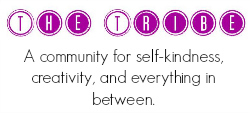 P.S. If you’d like to have more authentic conversations about things that really matter and to connect with like-minded kindred, I invite you to join The Tribe.
P.S. If you’d like to have more authentic conversations about things that really matter and to connect with like-minded kindred, I invite you to join The Tribe.
The post Struggling with Authenticity? Read this. appeared first on Becoming Who You Are.








 Related StoriesAre You In the Right Tribe?Episode 60: Rewriting Our Stories with Sas PetherickEpisode 59: Leaning into Deserving with Mara Glatzel
Related StoriesAre You In the Right Tribe?Episode 60: Rewriting Our Stories with Sas PetherickEpisode 59: Leaning into Deserving with Mara Glatzel
July 17, 2014
Episode 60: Rewriting Our Stories with Sas Petherick
This episode is a conversation with coach, writer, and life transformer Sas Petherick. Sas shows you how to get more love, money and joy by changing how you think. Really, she’s here to remind you of your vast, innate brilliance. She’s on a quest to help you feel your way to actions aligned to your truest self; to create a life that feels easy and awesome.
Sas is a Certified Coach trained by Dr. Martha Beck and the Coaches Training Institute, and she is currently wading through an MA/PhD in Coaching & Mentoring at Oxford Brookes University. Sas’ energy, smarts, humour and intuition guide every transformational coaching session and sold-out retreat. She’s been described as ‘equal parts laughing buddha and fiery femme, salty sailor and foxy minx’.
Sas offers so many golden nuggets in this conversation. Topics we cover include:
How to think about big life transitions
How we can rewrite our stories
Living with past trauma and pain and still experience joy
Why happiness isn’t the only feeling we should be striving for
Sas’s framework for letting go of our old stories and creating new ones
Useful Links
Let it Go - Sas’ self-coaching journey
Say Hello
Sas
Facebook: facebook.com/saspetherick
Twitter: @saspetherick
Website: www.saspetherick.com
Hannah
Twitter: @becomewhour
G+: plus.google.com/+HannahBraimeBWYA
Website: becomingwhoyouare.net
Subscribe to the Podcast
Intro and outro: Stephanie Murphy
Image credit: Nicholas Swanson
The post Episode 60: Rewriting Our Stories with Sas Petherick appeared first on Becoming Who You Are.








 Related StoriesKind & Creative #5This Is What Change Looks LikeEpisode 58: Life in the Middle Seat with Joshua Barad
Related StoriesKind & Creative #5This Is What Change Looks LikeEpisode 58: Life in the Middle Seat with Joshua Barad
July 14, 2014
Are You In the Right Tribe?
The kind of tribe with which we surround ourselves can make or break our quest for authenticity. Values like respect and honesty are integral to our relationships; without them, authentic living becomes a fight, rather than a journey.
So, what is the right kind of tribe?
In her excellent book Overcoming Underearning, Barbara Stanney defines what she calls ‘naysayers’ and ‘supporters’.
According to Barbara, four kinds of supporters are important in your community:
1. True Believers
These are people who recognise your potential and celebrate even the smallest success. They are the ones who say ‘go for it’ and are your community cheerleaders.
2. Confidantes
These are the people you turn to when you need a sounding board. They are the people you can talk to about your personal development, your quest to live an authentic life, and your challenges and successes along the way. They understand the steps you’re taking to change and are there to support you through the highs and lows of your journey.
3. Way Showers
Way Showers are role models. They might be people you know directly, or people you watch from a distance. People in this category are proof of authentic living. They say “you can do it too, let me show you how.”
4. Messengers
Messengers are information-bringers. They are the connectors, the referrers and the people that can provide you with leads that will further your authentic living. These are people who say “I can help”.
The Fifth Category
And then there are the naysayers. These are the people who are not supportive of your explorations into authenticity, and behave like you need to conform to their expectations, ideals and wishes. You can (usually, but not always) recognise people in this category by their use of emotive language, emotional blackmail, criticism, judgement and blame.
Your authentic self will piss the people in this category off, and the fact they get pissed off has nothing to do with who you are, and everything to do with them.
As we get older, we can find ourselves in several communities we didn’t necessarily choose: family relationships, friendships with people from our schools and colleges, friendships from work, and so on. These communities can be a source of comfort but, because of the ‘unconditional’ nature of them – the sense of obligation that comes from shared history, shared genes or shared experiences in the present – these aren’t going to be the communities in which we are necessarily able be our most authentic selves.
We might feel limited to express our authentic selves in front of our work colleagues due to the professional connection we have with them. We might be aware how much we have changed during the time we have been in certain communities. Some people in these communities – especially families – might have expectations about the way we should be, and the things we should do with our life. With friendship communities or old relationships, we might be aware that the person we have become – our authentic selves – might not fit in so well with that community anymore. I would love to say this is simply because everyone in the community has gone their different ways, but in reality it’s usually because that community isn’t authentic, and your growing authenticity challenges them.
And that can be scary, because if we acknowledge that particular community is a block to our authenticity, then what?
When it comes to change, the first step is awareness and the second is acceptance.
Click To Tweet - Powered By CoSchedule
Supporters: Yay or nay?
Grab a piece of paper and write each of the four headings at the top. Then, go through everyone you know and currently spend time with and add them to the relevant column. Include everyone who has some meaning or significance in your personal life. When you’re done, write down the total for each column at the bottom.
Note: There are some people in our lives – best friends, partners, parents, well- meaning aunts and uncles, siblings, managers, mentors – who are supposed to go in the supporter category, just by virtue of the relationship they have with us. For the purpose of this table, however, we’re disregarding labels and titles, and looking at reality. This table is for your eyes only, so forget about being polite or conforming to other people’s expectations: look at how the individuals in your community actually behave in real life.
Now that you have a clearer understanding of how your community is spread among the categories, spend some time thinking about these questions:
1. How does the spread look?
2. Are there any supporter categories that are looking a little thin?
3. Are there any surprises?
Now look at the naysayer category and think about the following questions:
1. How do I feel about each of the individuals in the naysayer category?
2. What affect does each naysayer have on me?
3. Based on what I’ve noticed doing this exercise, is there anything I could do differently in the future?
Sometimes we need to ‘fire’ our wrong people. They will cost you far more distress and discomfort in the long-term than making a difficult decision will in the short-term. When we invest in relationships with people who share our values, respect our values and support our growth, we’re giving ourselves the best chance of living a whole-hearted, authentic life.
This post is adapted from a chapter of my free ebook: “The 5 Most Common Blocks to Authenticity… and How to Overcome Them“. If you’d like to grab the rest of the book and learn more about creating your tribe, plus how to overcome the other four blocks, enter your email below.
Image: Caleb George Morris
The post Are You In the Right Tribe? appeared first on Becoming Who You Are.








 Related StoriesEpisode 59: Leaning into Deserving with Mara GlatzelWhy Your Goals Aren’t Working (and One Simple Change that Will Fix It)Kind & Creative #5
Related StoriesEpisode 59: Leaning into Deserving with Mara GlatzelWhy Your Goals Aren’t Working (and One Simple Change that Will Fix It)Kind & Creative #5
July 8, 2014
Episode 59: Leaning into Deserving with Mara Glatzel
 In this episode, I’m chatting to intuitive life and business coach Mara Glatzel.
In this episode, I’m chatting to intuitive life and business coach Mara Glatzel.
Topics we discuss include:
How to rewrite the rules you’ve set for yourself
Why we should stop asking “What do I want to do?” and start asking “How do I want to feel?”
The crucial elements we need to maintain a good relationship with ourselves
What “brave love” means and how we can apply it to ourselves
Why it’s so crucial to own our shadow sides
A different perspective on the word “deserving”
Useful Links
En*theos Academy
The Tribe
31 Days of Deserving
Say Hello
Mara
Twitter @maraglatzel
Facebook: facebook.com/maraglatzel
Website: maraglatzel.com
Hannah
Twitter: @becomewhour
G+: plus.google.com/+HannahBraimeBWYA
Website: becomingwhoyouare.net
Intro and outro: Stephanie Murphy
Image: Coley Christine Catalano
The post Episode 59: Leaning into Deserving with Mara Glatzel appeared first on Becoming Who You Are.









 Related StoriesWhy Your Goals Aren’t Working (and One Simple Change that Will Fix It)Kind & Creative #5How to Thrive as an Introvert in an Extroverted World
Related StoriesWhy Your Goals Aren’t Working (and One Simple Change that Will Fix It)Kind & Creative #5How to Thrive as an Introvert in an Extroverted World
July 7, 2014
Why Your Goals Aren’t Working (and One Simple Change that Will Fix It)
Listen to this post here:
During Journaling with Heart earlier this year, one of the participants asked an excellent question: what’s the difference between an intention and a goal?
There is a difference, and it’s both subtle and huge. When we talk about things we want to achieve in the future, we often talk about them in terms of goals. While proper (I.e. SMART) goal-setting is a useful practice, it comes with a health warning.
If we get too fixated on the goal itself, we end up living in the future, chasing something that doesn’t yet exist. We also become obsessed with an outcome and, in the process, miss out on something very important: the here and now. If we’re solely focused on a goal, the irony is that we’re unlikely to actually reach that goal, because we’re missing one crucial ingredient.
Too much goal = not enough soul.
That’s where intention comes in.
Intention is about falling in love with the process. And falling in love with (or, at least, being able to tolerate and learn to love) the process is the part of goal-setting that we often skip.
Reaching a particular goal is fantastic, but it’s a temporary state. Soon, we find that the goalposts shift and, now that our original goal has stopped being a goal and become the norm, we’re out chasing the next big dream. In this way, the goal itself is temporary and fleeting.
The process, on the other hand, is life.
The process is what we are living day in, day out as we move closer to a life that’s aligned with our values, needs, and preferences, as we stretch ourselves to grow, and as we expand our sense of what’s possible.
Are you focused on the goal (the outcome), or the intention (the process)?
Click To Tweet - Powered By CoSchedule
In the grand scheme of things, goals don’t matter as much as intentions. Intention dictates the choices we make each and every day that bring us closer to where we want to be. Goals are based on an outcome that is influenced by a wide variety of factors, some of which are out of our control.
With a healthy sense of intention, we might or might not meet our goals, but we’ll make sure we have a darn good time trying.
What goals do you have at the moment? How does it feel to reframe them as intentions, letting go of the outcome and focusing on the process instead? Leave a comment and let me know!
P.S. Looking for some goal inspiration? Also, level up and embrace your resistance.
Image: Kamil Lehmann
The post Why Your Goals Aren’t Working (and One Simple Change that Will Fix It) appeared first on Becoming Who You Are.








 Related StoriesKind & Creative #5How to Thrive as an Introvert in an Extroverted WorldKind & Creative #4
Related StoriesKind & Creative #5How to Thrive as an Introvert in an Extroverted WorldKind & Creative #4

